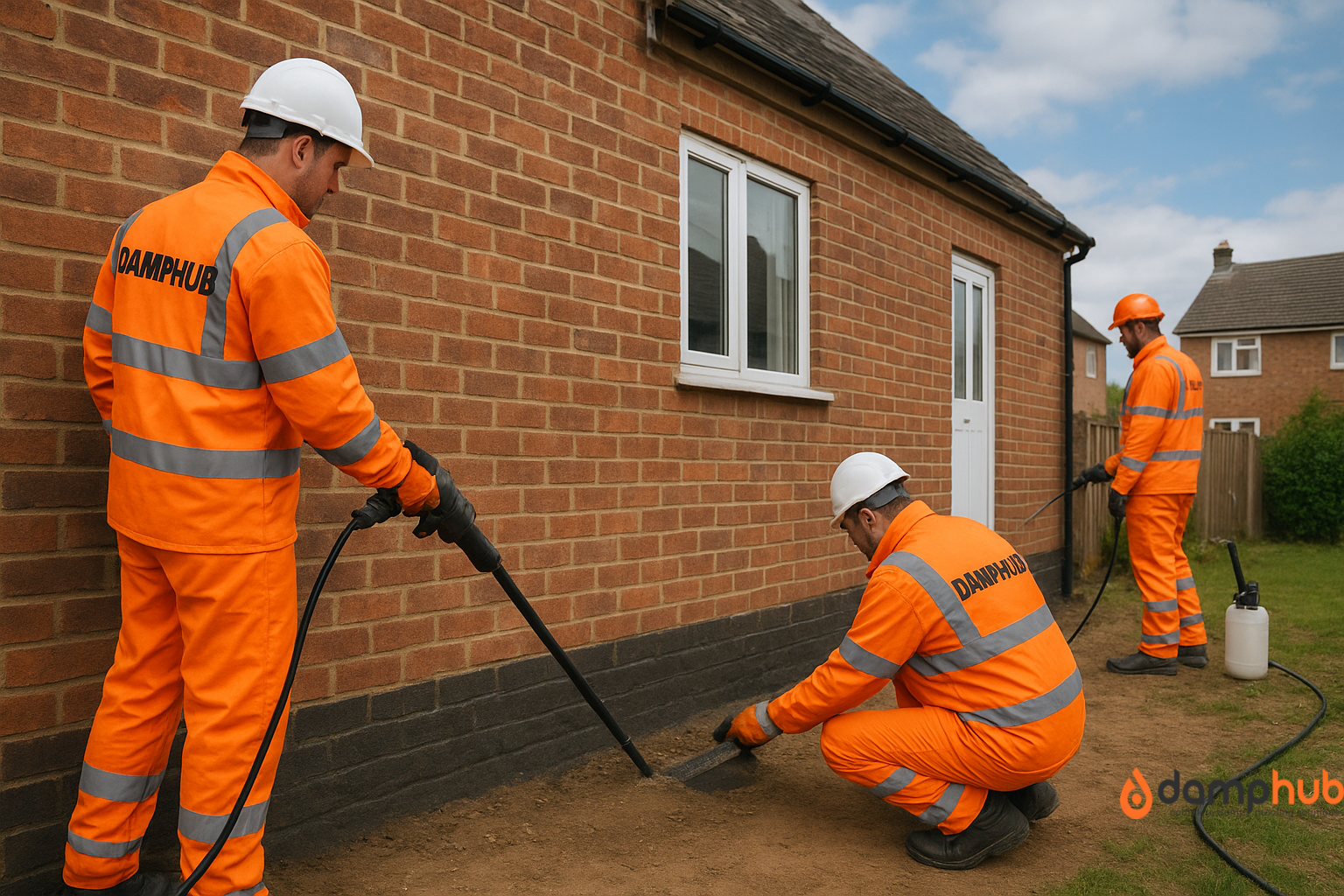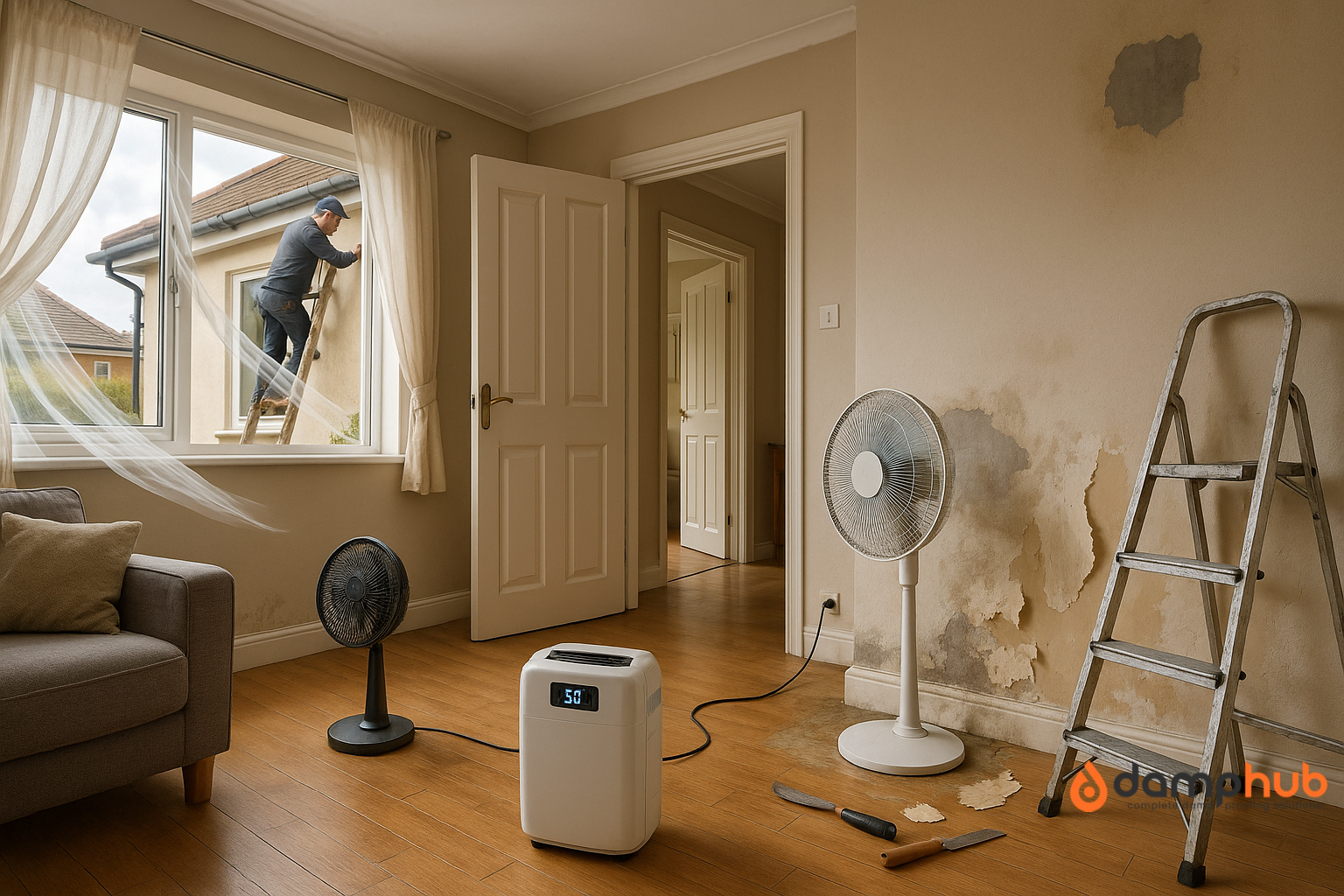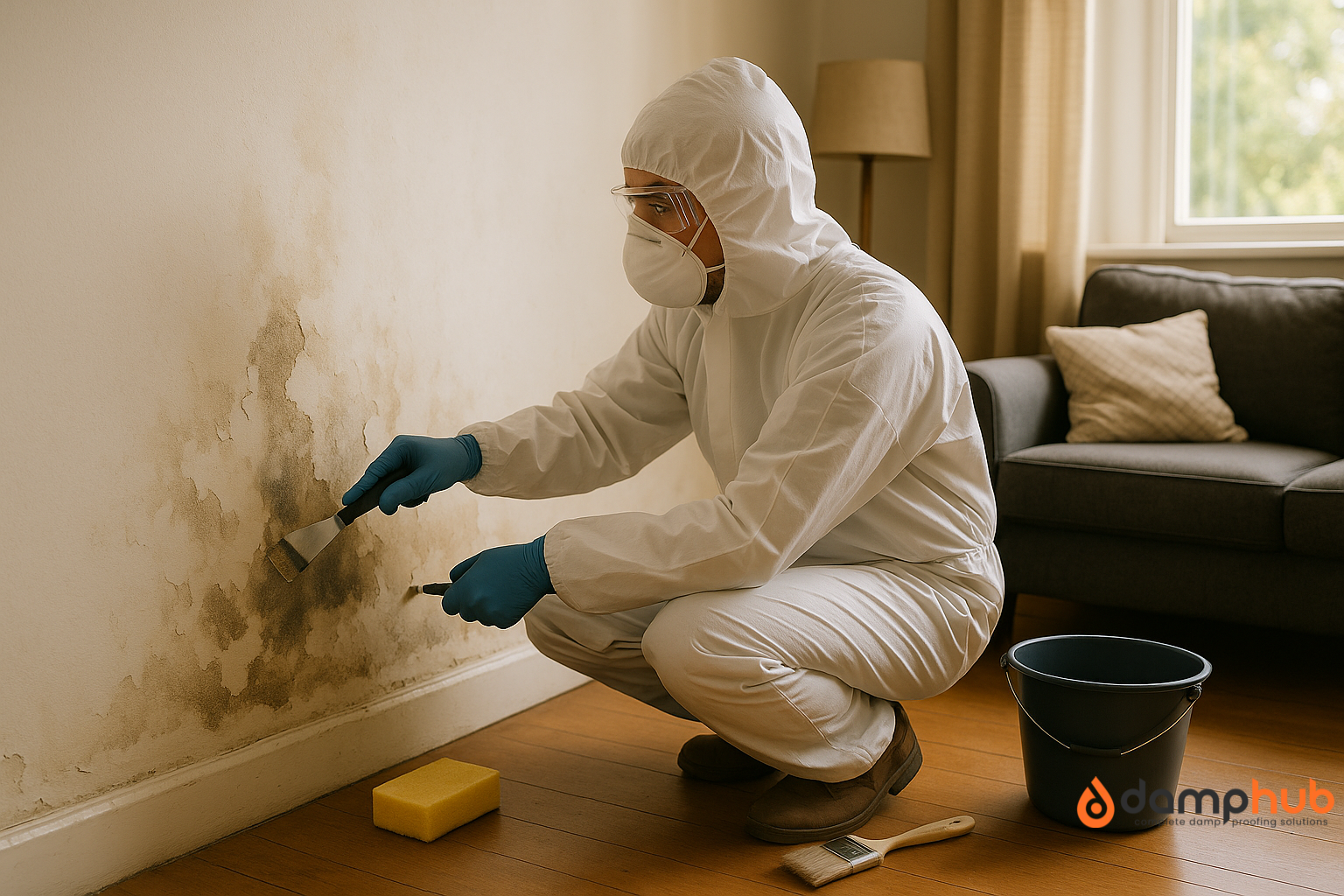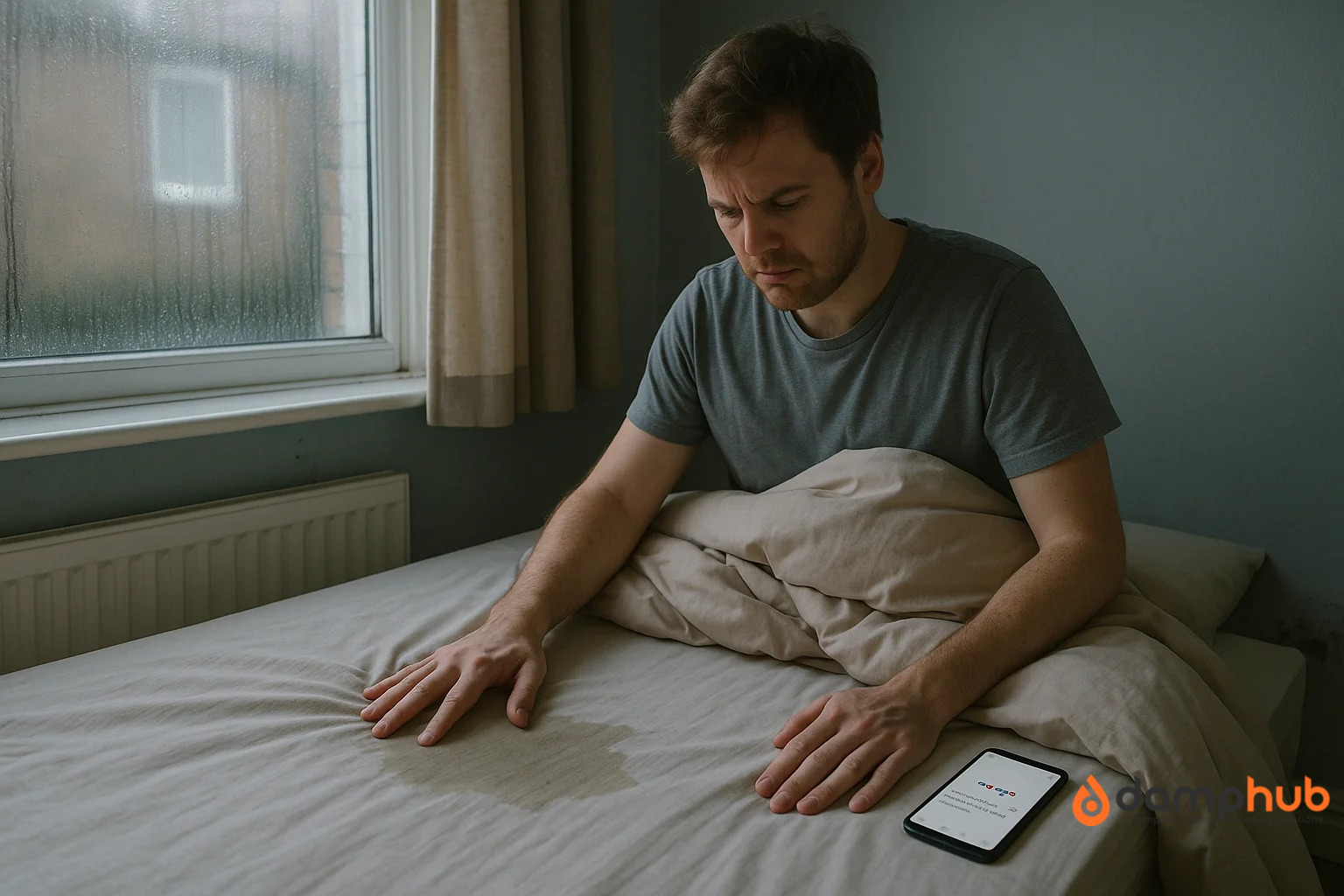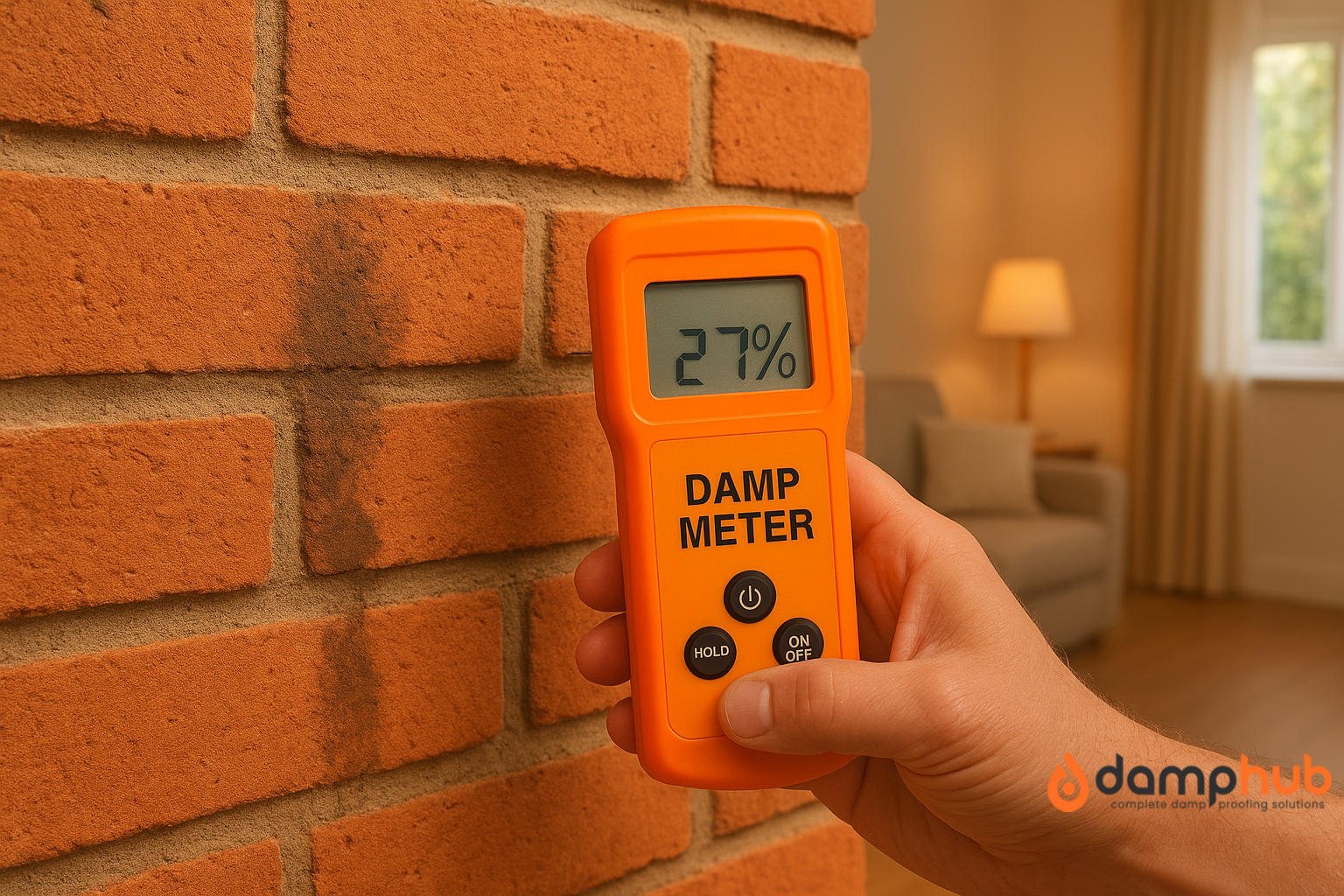
Living in a damp house isn’t just about ugly stains on the walls or the musty smell that never quite goes away. It’s more serious than most people realise. A damp home can mess with your health, damage your property, and frankly, make day-to-day life miserable.
We’ve been in flats where you had to wipe the windows every morning because the condensation ran down like rain. Truth is, what happens if you live in a damp house depends on how bad it gets — but either way, it’s not a situation you should ignore.
Let’s go through the basics, because spotting damp early on can save you a lot of trouble (and cash).
But before that, you may also want to find out what our experts have to say on this: Can a Damp House Make You Sick?
How To Know If A House Is Damp?
Sometimes, damp is obvious. You walk in and the smell hits you straight away — that earthy, cold, almost mushroom-like whiff. Other times, it’s sneakier. You don’t notice until paint starts bubbling, wallpaper peels, or a suspicious dark patch spreads behind the sofa.
Signs of damp to look out for in your UK home include:
- Condensation dripping on the inside of windows.
- Black mould spots creeping around the skirting boards or in the bathroom corners.
- A salty powdery look on brick or plaster — that’s moisture pushing salts out.
- Rooms that always feel clammy, even with the heating on.
Some people only realise when they get recurring coughs, rashes, or find their clothes smell damp even fresh out of the wash. That’s when you know it’s gone from annoying to unhealthy.
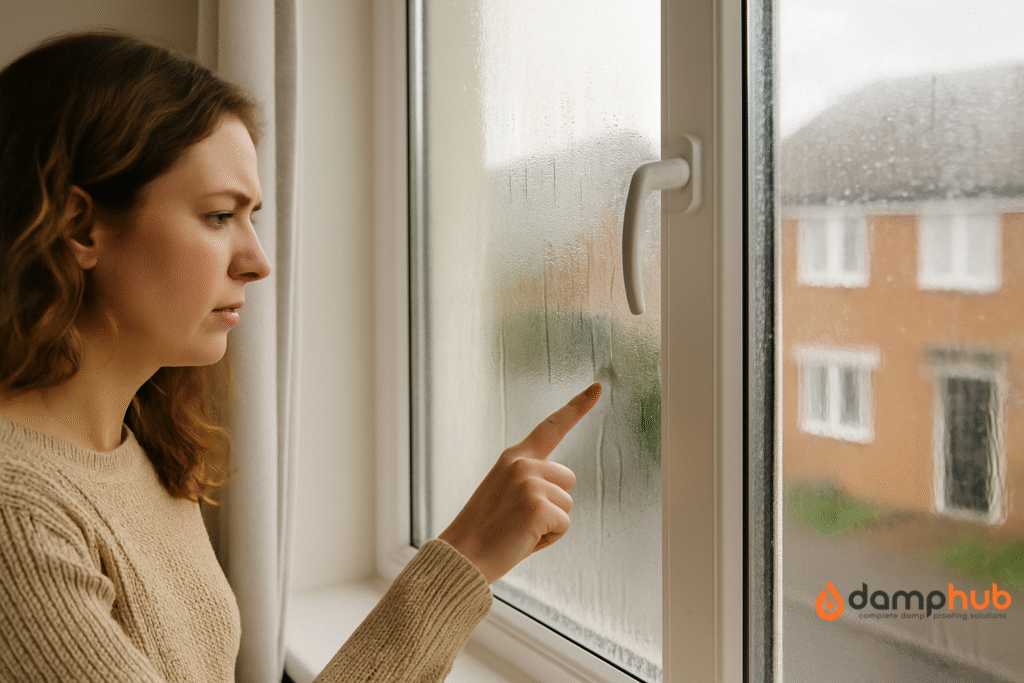
What Causes Severe Damp In A House?
Now, here’s where it gets tricky. Damp doesn’t just come from one thing. Sometimes it’s poor ventilation — too many people drying clothes indoors, never opening windows in winter. Sometimes it’s structural — like rising damp from bad or missing damp proof courses, or penetrating damp from dodgy gutters and leaky roofs.
The UK’s weather doesn’t help either. Weeks of rain, cold snaps, and older housing stock all add up. Victorian terraces? Gorgeous, but half of them were built before damp proofing was a thing.
And then there’s condensation, the silent troublemaker. You boil pasta, run a hot shower, breathe while sleeping, and all that water vapour hangs around. With nowhere to go, it turns into moisture on cold surfaces. Day after day, that’s a recipe for mould.
Is It Safe To Live In A Damp House?
Short answer: No, not really. Long answer: It depends on how long and how bad.
Mild dampness might just be an inconvenience. You might get away with it for a while, maybe just wiping down windows and bleaching the odd mould patch. But over time, it can affect your breathing, skin, and even mental health. Families with asthma or young kids are especially vulnerable.
There’s also the stress factor. Knowing your home isn’t dry or healthy can grind you down. It’s not just physical health — people underestimate the mental load of living somewhere that constantly smells musty or damages your belongings.
So, if you’re asking what happens if you live in a damp house long term: your health can suffer, your house value can drop, and your bills can rise (damp walls lose heat faster).
Pro Tip
If you spot damp, don’t just slap paint over it. That’s like spraying deodorant instead of taking a shower. It hides the problem for a bit, but the root cause is still sitting there, growing.
What Happens If You Live In A Damp House?
Let’s spell it out. You’ll deal with:
- Health issues. Wheezing, constant colds, allergies, rashes, and even fungal infections. Some people develop eczema-like flare-ups that never fully clear while the damp remains.

- Property damage. Wood swells and wet rots, plaster crumbles, and metal fixtures can rust. If you rent, landlords love to blame tenants for this — but truthfully, much of it comes from poor building upkeep.
- Financial cost. Heating damp homes is harder. Walls suck in moisture, and damp air holds heat poorly. So you’re cranking the boiler, but the room still feels cold.
- Social embarrassment. Honestly, inviting people over when your place smells of mould? Most of us just avoid it.
What happens if you live in a damp house is really a combination of these, and it tends to snowball. A patch that looks small in one winter can become a nightmare by the next.
What Percentage Of Damp Is Acceptable In A House?
Now, here’s where it gets geeky. Surveyors often measure moisture levels in walls. A “dry” wall should read under 20% moisture content. Anything above that, especially closer to 30% or more, means damp is active and destructive.
But here’s the catch: no home is ever bone-dry, especially in the UK. A bit of background moisture is normal. What you want to avoid is sustained high levels. If your skirting board feels soft or plaster crumbles when touched, that’s well past “acceptable.”
If you are more concerned and want to keep your home damp-free, we have covered more on acceptable damp percentage in our other guide: What Percentage Damp Is Acceptable In Walls?
● Good To Know
Some cheap handheld damp meters you buy online can be misleading. They pick up surface condensation and scream “damp” when the deeper structure might be fine. Proper surveys drill deeper.
How Do You Get Rid Of Dampness In Your House?
Getting rid of damp isn’t just one quick fix. It’s detective work plus action.
- Check gutters and roofs. Blocked gutters are one of the biggest culprits. Water spills down walls instead of away from them.
- Ventilation. Install extractor fans in bathrooms and kitchens. Leave trickle vents open on windows. Crack a window when cooking or drying clothes.
- Heating. Consistent low-level heating is better than blasting it now and then. Cold walls attract condensation.
- Professional treatment. Rising damp may need chemical damp proof courses, membranes, or even tanking in basements.
The thing is, you don’t just “get rid of damp.” You manage moisture. And once you’ve found the cause, you have to stay on top of it or it creeps back.
For more help, our other article offers deeper insights to get you started: How to Damp Proof a House: 7 Practical Tips from Industry Experts

How Much Will Damp Cost To Fix?
This one’s like asking how long is a piece of string. Minor fixes like improving ventilation or clearing gutters might cost under £200. Installing new extractor fans? A few hundred more.
But if you’re dealing with rising damp across multiple rooms, you could be looking at £3,000 to £5,000. Basements? Tanking jobs easily run £8,000 to £12,000. And that’s before redecorating.
That’s why catching it early saves thousands. Ignore it, and by the time plaster’s falling off and joists are soft, the bills will make your eyes water.
🛠️ Try This
Tape a bit of cling film tightly to a wall patch you suspect is damp. Leave it overnight. If water droplets appear on the room side, it’s condensation. If they appear on the wall side, it’s penetrating damp. Old-school trick, but it works.
What Happens If You Live in a Damp House? Answering Common Questions

-
How common is damp in UK houses?
More common than you’d think. Surveys suggest over 1 in 5 UK homes show signs of damp or mould at some point, especially in older stock.
-
Can a mortgage be refused because of damp?
Yes. Lenders don’t like risky assets. Severe damp lowers property value, and they can insist it’s fixed before approving funds.
-
How much does damp devalue a house?
Anything from 5% to 20%, depending on severity. A surveyor’s report highlighting damp will scare off buyers or knock thousands off offers. For more insights, read our full guide, How Much Does Damp Proofing Cost?
-
Can you get rid of damp in a house permanently?
You can control it, sometimes eliminate it, but “permanently” depends on maintenance. If gutters clog or ventilation drops, it can come back.
-
Does opening windows help with damp?
It helps reduce condensation, yes. But it won’t fix rising damp or leaks. Think of it as part of the toolkit, not the full solution.
Wrapping Up
So, what happens if you live in a damp house? You’ll deal with health niggles, financial headaches, and a home that doesn’t feel quite like home anymore. It chips away slowly, and before you know it, you’ve got mould on your clothes, plaster repairs piling up, and heating bills that don’t make sense.
The sooner you tackle it, the less it costs you — in money, health, and peace of mind. And no, you don’t need to panic over the odd steamy window in winter. But if patches are growing, smells linger, or your chest feels heavy at home? That’s your cue to act.
Because damp doesn’t just “go away.” It waits, and it worsens.

